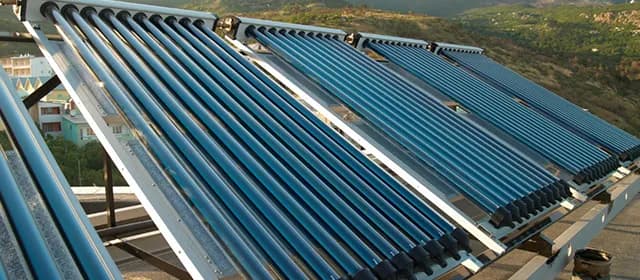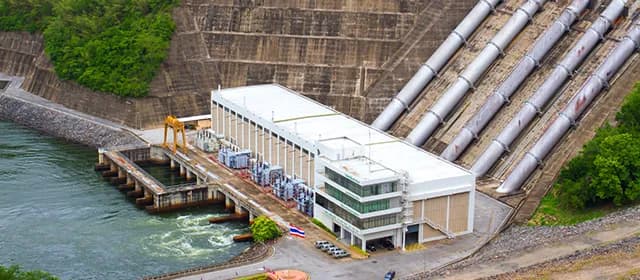For several years, we have been harnessing natural resources such as solar and wind to produce electricity. Hydropower, stemming from water, is an ancient and renewable energy source that continues to offer a sustainable choice. Its potential and numerous benefits are powering our lives.
Let's dive deeper and discover how timeless power sustains our modern life.
What is Hydropower?
Hydropower, or hydroelectric power, is energy produced with the use of falling or fast-running water. It is one of the largest and oldest sources of renewable energy and utilizes naturally flowing water to generate electricity.
Centuries ago, people harnessed hydroelectric power to turn paddle wheels on rivers to grind various types of grain. It has been a significant source of energy for producing mechanical and electrical energy. According to Kings Research, the global hydropower market is likely to attain $357.47 billion in revenue by 2030. This number shows significant growth in this sector.
How does Hydropower Work?
Hydroelectric power plants use a dam or diversion structure to alter the natural flow of a river or other body of water. The kinetic energy of flowing water is harnessed to generate electricity. A hydraulic turbine generates mechanical energy by converting the energy of flowing water, and a hydroelectric generator then uses this mechanical energy to produce electricity. This generated electricity is then fed into the electrical grid to power homes, businesses, and industries.
Hydroelectric power is more accessible and most of the countries rely on it for electricity. According to the Department of Energy, in 2020, approximately 66% of Washington State's electricity was derived from hydroelectric power.
Exploring the Main Advantages of Hydropower
Hydroelectric power offers numerous benefits across various domains, making it a crucial source of renewable energy. Below are some of the key advantages of hydroelectric power:
- Clean and Sustainable Energy
Hydroelectric power is clean and sustainable energy that is generated without emitting any greenhouse gasses or other pollutants, which makes it an environmentally friendly option. Methods like pumped storage hydropower (PSH) act as storage for use alongside renewables like wind and solar power during periods of high demand.
- Flexibility and Backup Power
Hydroelectric power is flexible, with some facilities capable of quickly transitioning from zero power to maximum output. This flexibility allows hydropower plants to provide essential backup power during major electricity outages or disruptions.
- Environmental Benefits
Hydroelectric power proves to be more environmentally friendly compared to other significant sources of electrical power reliant on fossil fuels. It does not emit waste heat and gasses common with fossil-fuel-driven facilities, which massively contribute to air pollution, global warming, and acid rain.
Additionally, many hydroelectric power plants are located in the headwaters of river basins, where they can help control fluctuations in water flow, enhance aquatic habitats, and prevent damage to vegetation and wildlife along stream banks.
- Non-Power Benefits
Apart from electricity generation, hydroelectric power facilities provide several non-power benefits, such as bolstering food security through reliable water for irrigation and creating reservoirs that offer recreational opportunities.
- Increased Jobs and Employment
Countries like the United States have established hydroelectric power industries contributing to a growing number of jobs in this field. As per the analysis by the Department of Energy, the U.S. hydroelectric power workforce is likely to reach 158,000 by 2050.
- Energy Storage and Grid-Scale Benefits
Hydroelectric power, particularly pumped storage hydropower, offers significant benefits for grid-scale energy storage, including low environmental impact, versatility, affordability, and contribution to grid resilience and reliability.
How Much Does Hydropower Cost?
Hydroelectric power is known for its cost-effectiveness, with the average production cost in the U.S. being approximately 0.85 cents per kilowatt-hour (kWh). This is notably lower than the costs of nuclear, fossil fuel, and natural gas energy production.
Additionally, hydroelectric power does not experience rising or unstable fuel costs, making it a stable and reliable energy source. However, the cost of building hydropower systems can vary widely based on factors such as project size and location.
Smaller hydroelectric power projects can have higher costs, while larger projects tend to be more cost-effective. It's important to note that the installation cost for hydropower worldwide has been decreasing over the years, making it an increasingly attractive option for sustainable energy production.
Understanding the Environmental Challenges of Hydropower
The challenges of hydropower include environmental impacts such as disruption of aquatic ecosystems and the potential displacement of communities due to dam construction. Additionally, changes in river flow and sediment transport can affect downstream habitats and water quality.
To address these challenges, the implementation of innovative fish passage systems and environmental impact assessments can help mitigate the impact on aquatic life. Furthermore, adopting advanced sediment management practices and considering the social and environmental implications of dam construction can help minimize the displacement of communities and preserve downstream ecosystems.
Similarly, the U.S. Department of Energy invested in the research and development of advanced turbines, aiming to significantly decrease fish kill rates. Previously, the rate of fish deaths ranged from 5% to 10%, but with current advanced turbines, it has become less than 2%. This is a substantial improvement compared to the old turbines.
Concluding Thoughts
Hydroelectric power stands as a resilient and sustainable source of energy, offering a multitude of benefits alongside challenges that require careful consideration. Its ability to generate clean electricity, offer flood control, and support irrigation and water supply positions it as a valuable asset in the quest for renewable energy.
With advanced technologies, environmental assessments, and community engagement, hydropower can maintain its position as a key contributor to a greener, more sustainable energy landscape.




